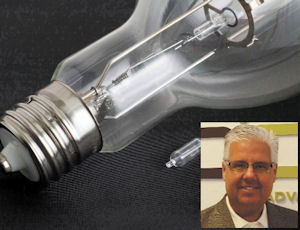Light component manufacturer Topanga Technologies is preparing to bring its first product to market and hire more employees after attracting $15 million in venture capital funds. Topanga’s technology caught the attention of venture capitalist firms Khosla Ventures and Nth Power. Both firms are known to invest in clean energy startups and previously contributed funds to the Canoga Park-based company. The $15 million represents their latest combined investment, which happened last month. “This accelerates the equipment purchases and hiring,” said Topanga Technologies President and CEO Greg Barry. “Anytime you have fresh capital it gives the ability to accelerate the go-to-market strategy.” Topanga officials said the company will begin the high-volume manufacturing of its lights within the next six to eight months. At its Valley operations, the number of employees is expected to more than double from 20 workers to 50 workers. The company also plans to invest $2 million in new equipment. Topanga executives describe their product as a lower cost and energy efficient alternative to 400-watt lightbulbs and LED lights for uses such as street lamps, aircraft hangars and manufacturing bays. “Costco uses them, and Best Buy,” said Brian Hermes, Topanga’s vice president of business development. Most warehouses use high-intensity lights, he added. As a component manufacturer, Topanga doesn’t serve all markets. Its lights are too bright for residential use, for instance. The markets it does serve are the sweet spot in the lighting industry. According to research firm IBISWorld, nearly half of the lighting and bulb manufacturing in the U.S. goes toward non-residential uses. Revenues in the U.S. reached nearly $2 billion last year. The worldwide market is in the $9 billion to $10 billion range, said Barry, an industry veteran who has worked for Hubbell Lighting, Acuity and General Electric. “It’s a small industry from the people perspective,” Barry said. “It’s huge from the money perspective.” While standard light bulbs use wire, electrodes and filaments, the tiny Topanga bulb is lit when radio frequency waves excite gases in the bulb to create a plasma state. Topanga received seven patents for developing this process of lighting. The company has 23 patent applications filed or pending and is preparing to file another 27 patent applications, company officials said. Those in the lighting industry say Topanga’s technology will likely change how lighting fixture companies operate. With the smaller bulb, there will be smaller and lighter fixtures, they say. Standard light bulbs in warehouse ceilings require reflectors that are 22 inches in diameter, whereas plasma bulbs use a much smaller reflector and radiate the same amount of light, said Mayelle Corpus, West Coast account manager with Grandlite, a lighting fixture company in the City of Industry. The Topanga lights are easier to use because of their replaceable parts, Corpus said. “It doesn’t really take too much knowledge to get that done,” Corpus said. “They are trying to make it user friendly.”
